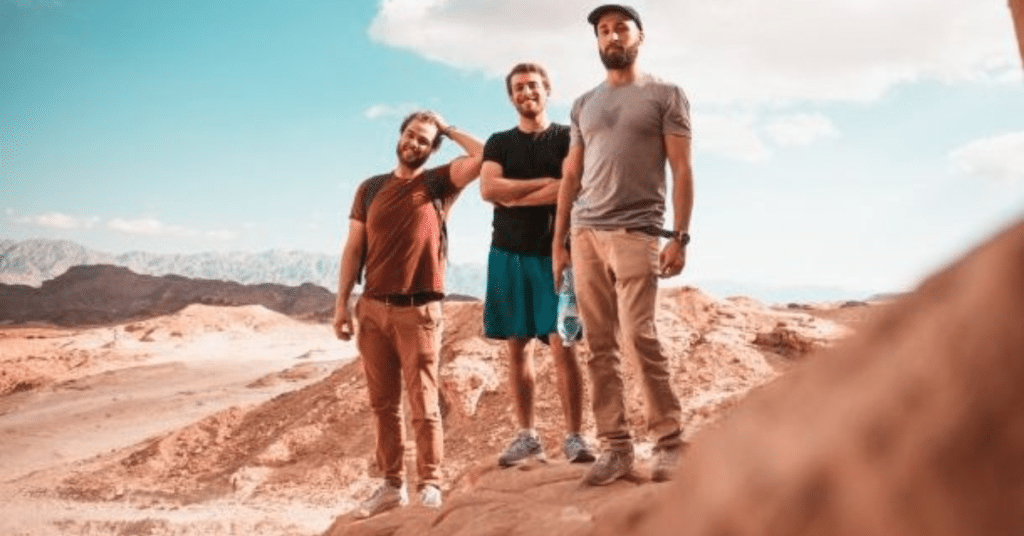A desert safari in the United Arab Emirates (UAE) offers an unforgettable journey into the heart of the Arabian Desert. With golden dunes stretching endlessly and thrilling activities like dune bashing, quad biking, and camel riding, it’s no wonder this adventure draws visitors from around the world.
However, amid the excitement, one thing should always take precedence: your safety.
This comprehensive desert safari safety guide will walk you through everything you need to know to prepare for and enjoy a secure, well-planned desert adventure — whether it’s a morning desert safari or a romantic overnight desert safari in Dubai.
Understanding the Desert Environment
The UAE desert may look serene, but it can be harsh and unpredictable. Here’s what to expect and how to prepare:

Extreme Temperatures
- Daytime highs: Often exceed 45°C (113°F) between April and October
- Nighttime lows: Can drop below 15°C (59°F), even in summer
👉 Pro Tip: Always pack layers — especially if you’re going out after sunset.
Sudden Weather Changes
Sandstorms and gusty winds can appear without warning, reducing visibility and increasing risks.
Wildlife Encounters
While rare, snakes and scorpions do live in the desert. Maintain a respectful distance and refrain from touching anything unfamiliar.
Preparing for a Safe Desert Safari

1. Choose a Reputable Tour Operator
Only book with licensed operators who have positive reviews, certified guides, and a strong safety record. Look for companies that offer VIP desert safaris or family-friendly packages if traveling with kids.
2. Understand the Itinerary
Before booking, review the full itinerary. Know:
- Duration
- Included activities (e.g., sandboarding
- Timing (morning, evening, or overnight)
- Level of physical activity involved
3. Get Required Permits
Some areas require special permits for access. Your tour provider should handle this, but double-check before departure.
4. Pack Smartly
Here’s what to bring:
- Lightweight long-sleeve shirts and pants
- Wide-brimmed hat and UV-blocking sunglasses
- High SPF sunscreen and lip balm
- Water bottle (at least 2 liters per person)
- Closed-toe shoes for sand and heat protection
- Camera or phone for memories
📌 Pro Tip: Avoid synthetic fabrics — they trap heat. Stick to cotton and linen for breathability.
On-Safari Safety Rules You Must Follow
Listen to Your Guide
Your experienced desert guide is trained to navigate the terrain and manage risks. Always follow their instructions, especially during high-speed dune bashing or quad biking.
Stay Within Designated Areas
Straying off-trail can damage fragile ecosystems and put you at risk of getting lost or encountering dangerous terrain.
Avoid Risky Behavior
- Don’t climb unstable dunes or cliffs.
- Never touch or feed local wildlife.
- Avoid walking barefoot — hot sand can burn skin.
Off-Road Driving Tips
If you’re driving, maintain steady momentum while ascending dunes. Avoid sudden stops or sharp turns. Keep a safe distance from other vehicles.
Health & First Aid Essentials
Prevent Heat-Related Illnesses
Dehydration and heatstroke are real risks. Drink water regularly, even if you don’t feel thirsty. Watch for symptoms like:
- Dizziness
- Rapid heartbeat
- Confusion
- Hot, dry skin
If someone shows signs of heatstroke, move them to a shaded area immediately, cool their body with wet cloths, and seek medical attention.
Sun Protection Is Non-Negotiable
Apply SPF 50+ sunscreen every 2 hours. Wear loose clothing that covers arms and legs. Sunglasses with UV protection are a must.
Basic First Aid Kit
Carry:
- Bandages and antiseptic wipes
- Pain relievers
- Insect repellent
- Personal medications
Camp Safety: Staying Safe at Night
Set Up Safely
Select a flat area away from dunes or vegetation. When camping independently, use only the designated fire pits.
Fire Safety
Use portable stoves when possible. If using a campfire:
- Keep a bucket of water/sand nearby
- Never leave the fire unattended
- Extinguish fully before sleeping
Waste Management
Pack out all trash. Leave no trace behind. Respect the environment by avoiding littering or disturbing natural habitats.
Navigating Nighttime Dangers
Nocturnal Wildlife
Snakes, scorpions, and insects are more active after dark. Stay alert and wear closed shoes outside the camp area.
Night Photography Tips
Use red light flashlights to avoid startling animals. Refrain from shining bright lights directly at wildlife.
Emergency Preparedness
Carry Communication Devices
Ensure your mobile has a full charge. Some remote areas have limited signal — ask your tour operator about emergency radios.
Know Emergency Contacts
Save local emergency numbers and share your itinerary with someone who won’t be on the trip.
Recognize Signs of Distress
Know how to identify dehydration, heatstroke, and allergic reactions. Learn basic first aid procedures or travel with someone who is trained in first aid.
Post-Safari Care & Environmental Responsibility
After the adventure ends, your responsibility doesn’t. Practice responsible tourism by:
Cleaning up your campsite thoroughly
Carrying back all waste
Respecting protected zones and wildlife
Support conservation efforts and spread awareness about sustainable tourism practices.
FAQs
Are desert safaris safe for children?
Yes, desert safaris can be enjoyed by children. However, it is essential to choose age-appropriate activities and ensure their safety by following all necessary precautions and guidelines.
What should I do if I encounter a snake or scorpion during a safari?
If you encounter a snake or scorpion, it is best to keep your distance and not disturb the animal. Please do not attempt to handle or provoke it. Notify your safari guide immediately, as they are trained to handle such situations.
Can I bring my vehicle for a desert safari?
In most cases, it is advisable to use the services of a reputable safari provider that offers specialized off-road vehicles suitable for the desert terrain. Bringing your vehicle may not be permitted or safe without proper knowledge and equipment.
Is it necessary to book a desert safari in advance?
It is recommended to book a desert safari in advance, especially during peak tourist seasons, to ensure availability and secure a reputable safari provider.
How can I stay hydrated during a desert safari?
To stay hydrated, carry an ample supply of water and drink regularly throughout the safari. It is advisable to drink small amounts frequently rather than large quantities infrequently.
Final Thoughts: A Safe Safari = An Unforgettable One
Safety should never take a backseat to adventure. By choosing the right desert safari package, packing wisely, and following expert advice, you’ll protect yourself and those around you, ensuring a memorable and enjoyable experience.
So whether you’re planning a couples’ retreat or a budget-friendly outing, always keep safety top of mind.
🧳 Ready to Book Your Safe Desert Safari?
Seeking a reputable desert safari provider? We recommend checking out Desertleapsafari.com for vetted, safety-conscious experiences across Dubai.
Let your adventure begin — safely!
Related Reading:
- Is a Desert Safari in Dubai Worth It?
- How to Plan the Perfect Desert Safari in Dubai
- What to Wear During a Desert Safari in Dubai
- Cost of Desert Safari in Dubai

